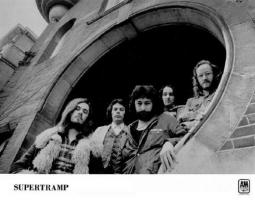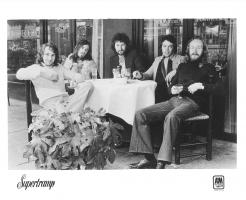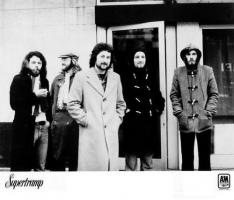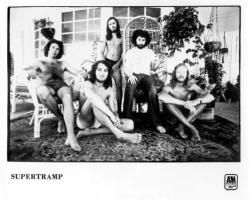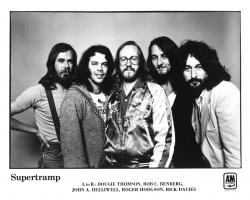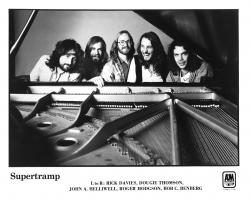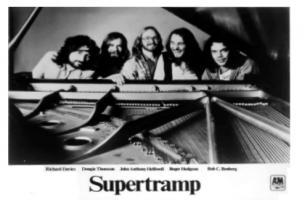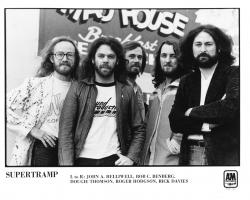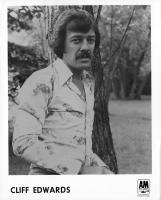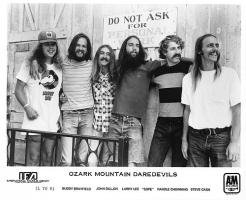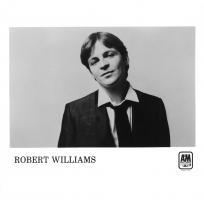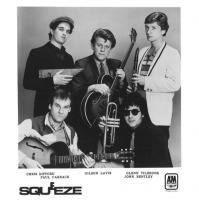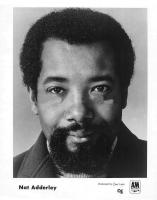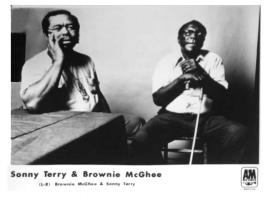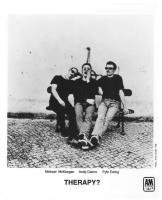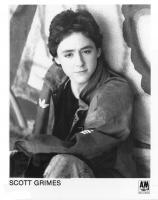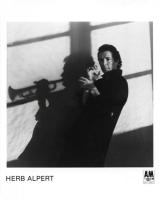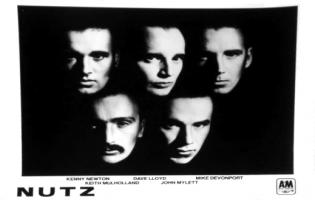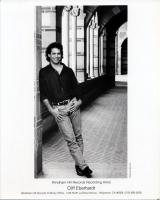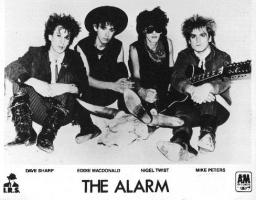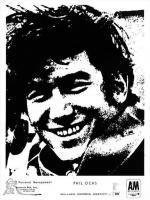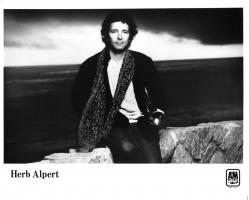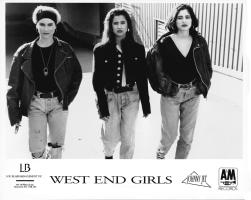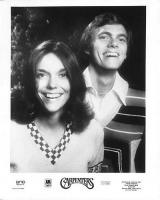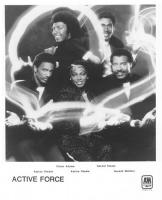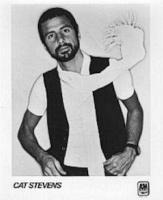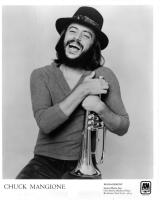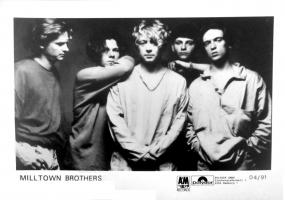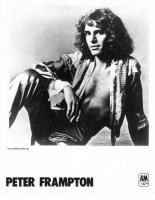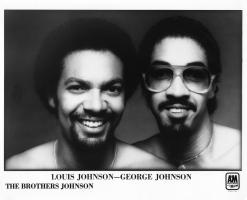Supertramp
"One of my favorite groups. Supertramp created something so pristine and clean, yet emotional, at the same time."--Herb Alpert
"They gave us an amazing album when we really needed one.... 'Breakfast In America' was remarkable. It was an absolutely huge record worldwide – it even sold a million albums in France! From the sound alone of 'The Logical Song' or 'Take the Long Way Home,' you could tell it was Supertramp."--Jerry Moss
The group took its name from the W. H. Davies book The Autobiography of a Super Tramp.
SUPERTRAMP AND INDELIBLY STAMPED
The first few years of Supertramp were unsettled as Rick Davies and Roger Hodgson learned to write music together and searched for musicians who could create the sounds from their instruments that the duo wanted.
Signed with A&M Records, Ltd. in 1971 for two albums. In the U.S., Jerry Moss did not like the band's first two albums and refused to release them. Moss was also aware the albums had not sold well in England. The albums were subsequently released in the U.S.
Supertramp was recorded with Rick Davies, Roger Hodgson, Robert Millar (percussion and harmonica) and Richard Palmer (guitar).
Indelibly Stamped was recorded with Rick Davies, Roger Hodgson, Kevin Currie (drums), Dave Winthrop (flute, sax and vocal), and Frank Farrell (bass, harmonica, piano and accordion). The album was released in England on June 25, 1971. The front cover was a photograph of a woman's breasts and tattoos. Some retailers refused to sell the album because of the cover art.
By 1972, Davies and Hodgson had written several songs that would become hit records in later years including "Breakfast In America," "School," "Dreamer" and "Bloody Well Right." The line-up in 1972 included Davies, Hodgson, Winthrop, Currie and Dougie Thomson.
In 1973, the line-up became set with Davies, Hodgson, Dougie Thomson (bass), Bob Siebenberg (drums) and John Helliwell (woodwinds). During that same year Roger Hodgson and Dougie Thomson took some demos to A&M Records, Ltd. Managing Director Derek Green was aware of previous albums but based on the new demos got A&R Director Dave Margereson to work with the band. Margereson liked some of the new demos enough to get the funding to record them as well as signing their music publishing to Rondor Music International.
CRIME OF THE CENTURY
A&M Records, Ltd. paid for Supertramp's housing and food while it developed the 20 or more songs considered for the band's third album. A&M also paid for studio time and Ken Scott, the album's producer. Recording sessions ran longer than expected primarily because the band created sounds and effects that had to be made by hand and often using items that were not musical instruments. This brought an additional element of creativity to each band member. Therefore, the cost to make the album rose. Crime of the Century was recorded between February and April 1974 and mixed between April and June 1974. A&M Records president Jerry Moss was in London during the recording of the album and asked to hear the material--none of it finalized. Moss approved additional funding and time to complete the album to the band's satisfaction.
The first pressings of the album for release in the U.K. were done by CBS' classical division using the highest quality vinyl. Thanks to the superb recording engineering of the album it was often used to set up both home and studio sound systems.
By this time, Hodgson and Davies were writing songs individually, however, each contributed to the other's songs, particularly in their arrangements. They agreed to publish the songs as written by both men. On the recordings, the lead singer was the song's writer. As people and as songwriters they were different but complimented each other.
Crime of the Century was released with eight songs. More than a dozen songs would not be used. Some of those were released on subsequent albums and some have never been released. The album was constructed with a beginning, middle and end with one song leading into the next. Supertramp would always be known for its attention to detail in creating an experience for listeners.
On September 24, 1974 A&M Records executives worldwide gathered in Chelsea, England at King's Road to hear Supertramp perform the album. Once again, Jerry Moss was there. The original Trampettes debuted with the group. They were Vicki Siebenberg, Scott Gotham and Christine Helliwell. The trio were the backing vocalists on the album. On tour The Trampettes were the group's road crew.
Crime of the Century stayed on the German chart for 93 weeks.
In Canada Crime Of the Century received A&M's team commitment across the country. Coupled with colossal media and retail support to coincide with tours, A&M Canada broke the band in North America. It began in Montreal when FM radio stations CHOM and CKOI gave the band heavy airplay. Stations throughout Canada picked up the songs. The album was promoted with stickers of the album cover. By March 1975, the album had sold 12,000 units in Canada. Supertramp performed four concerts in Canada to support the album. Canada followed that success by bringing Supertramp there to tour, not only for the first time in North America, but as a headliner. By late 1976, the album had been on and off the Canada chart for two years and Crisis? for one year and was heading for double platinum.
A&M Canada gave Supertramp its highest sales anywhere in the world. Crime Of the Century was the first album to sell over one million copies making it the first to receive a Diamond Award from CRIA. In Canada, sales of 10,000 units is considered a platinum album. Therefore Crime's Diamond Award is the equivalent of a 10x platinum album.
The Crime of the Century tour began on October 18, 1974 and ended on August 23, 1975. The tour required complicated equipment to be able to reproduce the studio sounds, plus lighting and effects. There were 25 sold out shows in England. The concert ran about 75 minutes featuring the songs from Crime played in the same order as the album.
CRISIS? WHAT CRISIS?
"Crisis? What Crisis? came to mean more to us as a title than it did to other people because it was really a crisis album. We learnt how not to make an album, coming right off the road and going into the studio. It could have been much better than Crime of the Century, but it wasn't. We had a lot of bad luck in the studio. We really didn't enjoy making it and in the end it was kind of a patch-up job. A lot of people liked it, but for us it missed."--Roger Hodgson in Sound
"...There was a lot of pressure to come up with an album quickly and go out on tour after the success of Crime of the Century.. I knew we had the songs. I think Crisis? What Crisis? is a great selection of songs, but they didn't come out as good as I was hoping, anyway. And part of that was just the stressful situation we were under, so yes, the title of that album definitely suited what was going on with the band. Crisis? What Crisis? in fact came from a sketch that Rick did in the waiting room of the studio, and it reflected the stress we were under in just getting that album completed."-Roger Hodgson in Goldmine
The album relied on unreleased songs from prior albums. It was recorded at A&M Studios in the summer of 1975.
Crisis? What Crisis? cost around £200,000 to make, the most expensive that A&M Records Ltd. had financed. And, it was for a band that had never performed live. A&M Ltd. simply believed in Supertramp because the songs were good.
The Crisis? What Crisis? promotion in England used 8-track machines installed inmate than 700 retail stores in major cities. A&M created promotional tapes with several of its artists for this campaign. Crisis? was also promoted through its first single "Lady" receiving nightly play in 720 cinema houses along with promotional posters. A&M estimated the promotion would reach 1.5 million people. From November 17 until December 15, 1975, A&M had a single decker bus the "A&M Road Show" that went to venues stocked with copies of Crisis?, the single "Lady", posters, sweatshirts and more. During that time Joan Armatrading and the Movies were the support act and copies of Joan's "Back to the Night" were given to on-the-spot contest winners.
A&M partnered with Cinedisc in the U.K. for a week-long promotion of the album via 20 minutes of six tracks. An estimated 1.5 million people were to hear the tape as a preview to the album. In another promotion, A&M installed 8-track machines in 50 stores located in major British cities. The machines were stocked with a tape that featured four A&M artists, three of whom were English.
A&M Ltd. booked the tour and financed it. Supertramp was on the road with Gallagher & Lyle and Chris DeBurgh supporting them. British tour, then Europe, then the U.S., Canada, Australia and Japan. The tour started on November 13, 1975 and ended on June 22, 1976.
The band toured again from January 23 until February 11, 1975. Jerry Moss wanted Supertramp to tour in the U.S. and paid for the sound and audio equipment to permit 30 shows in the U.S. and Canada. The first American date was on April 4, 1975 in Milwaukee, WI. The group was almost unknown in the U.S. so A&M Records lost money on the tour despite promoting it with radio giveaways and featuring an edited version of "Bloody Well Right" for airplay. On April 27 the tour was postponed until late July because Roger Hudson suffered a broken thumb. The tour ended in Montreal, Canada on August 17.
EVEN IN THE QUIETEST MOMENTS
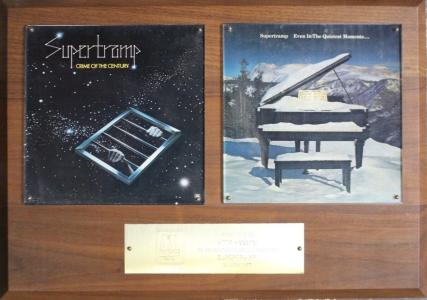
Even in the Quietest Moments shipped platinum in the U.S. and Canada and gold in Holland. In Spain it stayed on the charts for 80 weeks and was #1 longer than any record in that chart's history.
In 1976, Supertramp was Billboard's #6 Top Artist performing at auditoriums with less than 6,000 seats. Their two-day stand in Santa Monica, CA grossed $55,884 and the overall #3 artist in the auditorium category.
In May 1977, "Give a Little Bit" was a Billboard Recommended Pop Single. Even in the Quietest Moments was #15 in Britain on May 14, 1977. At the same time in Canada, it had sold more than 125,000 copies. Combined sales of Crisis?, Crime and Moments was over 700,000 albums with 380,000 for Crime.
The tour supporting the album began on April 6, 1977 and ended on November 10, 1977.
BREAKFAST IN AMERICA
Supertramp's Breakfast in America album shipped platinum in the U.S on March 29, 1979. The album shipped gold in Belgium, France, Holland, Norway, Canada and Australia. It was double gold in Spain and Portugal. On the music charts, it went to #1 in 17 countries. By March 1980, the album sold nearly ten million units in Europe.
From Marcus Bicknell: "'Breakfast in America' was released three weeks earlier (9 March 1979) in every country of Europe than in the USA (29th March). This was in response to tremendous groundswell for the album in their key markets like Holland, France, Germany, Italy and Spain and to tell the media outside the English speaking countries that they mattered to us and to the band. At 9 a.m. on that 9th March, about 30 radio stations in 17 countries received a visit from one of our promo ladies, dressed as Libby, carrying a tray with orange juice, croissant and coffee in our specially-made porcelain cup…and a first copy of the album on vinyl. Despite the album only being finished in December 1978 we were able to get these cups made in Paris in a couple of months. 'Breakfast' sold 7 million on the continent before year end of which 4 million were in France - the fourth best selling album there ever."
"They've sold two million in Europe already and Breakfast In America has done 300,000 in France alone. The band has been No. 1 in 10 countries and gone gold in 11, all within 90 days of the launch of the album. We're anticipating and basing our marketing plans on one million French sales. It's not impossible because everybody wants to know about this album, and the title track and Logical Song and Goodbye Stranger are being treated like singles in terms of exposure and airtime."
The album art was conceived by A&M art director Mike Doud. The waitress was model Kate Murtuagh.

Breakfast In America was supported in Britain by a contest with one winner and friend from each of the five newspapers featured on the album's back cover receiving a 3-day trip to New York to see Supertramp perform at Madison Square Garden and to meet the band member holding the newspaper that chose them. One store reduced the album price by £2 for two hours. The event was advertised on radio. Several hundred people came to the store for the promotion.
Breakfast In America and Crime of the Century were both certified platinum within one month of each other. It took five months to record Crime of the Century, eight months for Breakfast in America and 16 months for Famous Last Words. Additionally, singles of "The Logical Song" and "Dreamer" reached No. 1 in only one country--Canada. Supertramp was the first artist ever to have two albums that each sold over one million copies in Canada. In Canada a million selling album means it is 10x platinum and is given a Diamond Award
Among Breakfast's other achievements:
Billboard #1 album for six weeks and a total of 48 weeks on the Billboard album chart
Top 10 in the U.S. with "The Logical Song" and "Take the Long Way Home"
Top 20 in the U.S. with "Goodbye Stranger"
Supertramp owned its own sound system for concerts and it owned Delicate Acoustics. Their system weighed 26 tons and was insured for more than $5 million. The system was rented to other acts when Supertramp was not on tour.
Supertramp's contract with promoters held promoters liable for up to $500,000 for a bootleg album recorded within its venues.
By April 1979, Supertramp had 21 gold albums in Europe, plus eight double-golds and platinums.
Breakfast In America sold more than 18 million copies worldwide.
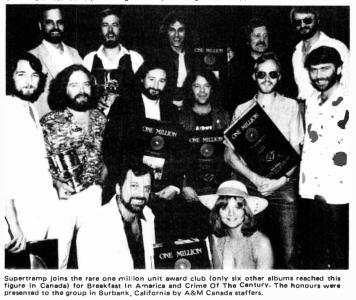
The Breakfast tour ran from March 16, 1979 until December 9, 1979.
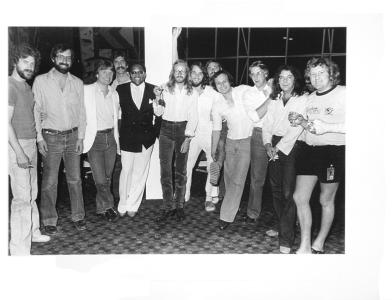
Supertramp at the Omni in Atlanta, GA.
Greg Steffen, unknown, unknown, Alan Oken, Harold Childs, John Helliwell, Roger Hodgson, Dougie Thomson, unknown, David Fitch, Bob Siebenberg, Dave Margereson
...FAMOUS LAST WORDS...
...Famous Last Words... was the first major, mass-produced album released as an audiophile album in late 1982.
The working title for Famous Last Words was Tightrope.
The tour for this album started on June 1, 1983 and concluded on September 25, 1983.
When Roger Hodgson went solo in 1983, Supertramp was not allowed to perform his songs in concert. Although most songs had been credited to both Hodgson and Rick Davies as co-writers, they were written separately. The man who sang lead was the song's writer.
BROTHER WHERE YOU BOUND
Brother Where You Bound shipped gold in Canada with an initial pressing of 83,000 copies. The title track was considered for the ...Famous Last Words... album. "Ever Open Door" was also written around the time of ...Famous Last Words....
The Brother tour started on September 23, 1986 and the last concert was held on March 19, 1986.
A&M Records Canada launched Brother Where You Bound with a packed performance at Toronto's appropriately named Diamond Club. Following the show, they retired to A&M head offices for a party.
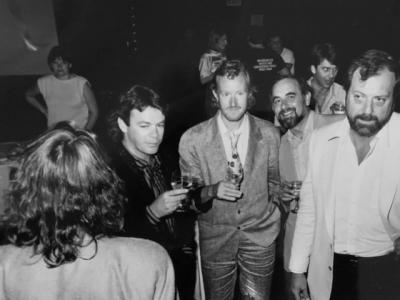
A&M Records reception when Supertramp played Toronto's Diamond Club for the Brother Where You Bound album release. Front: Rick Davies, John Helliwell,Dougie Thomson, Bob Siebenberg, Back: Gary Hubbard (VP Finance) Gerry Lacoursiere (President A&M Canada), Joe Summers (VP and general manager), Sue Davies, Bill Ott (VP sales and marketing), Randy Wells (national promotion, Jeff Kulawick (special projects). Photo by Matthew Wylie.
FREE AS A BIRD
The tour's first date was January 9, 1988 and its final date was April 19, 1988.
BEYOND A&M RECORDS
Roger Hodgson, Rick Davies and John Helliwell came together on April 14, 1993 to perform "The Logical Song" and "Goodbye Stranger" at the Entertainment Industry Foundation's Cities in Schools Honors A&M Records Chairman Jerry Moss. The event was held at the Beverly Hilton Hotel, Beverly Hills, CA.
Supertramp's song "Give a Little Bit" was featured in a Gap television commercial.
Supertramp's "Dreamer" became the theme music in Acura television commercials in 2007.
OFFICIAL PROMOTION BY A&M RECORDS
Crisis? What Crisis? New Music On A&M Records
Supertramp official biography 1975
Even In the Quietest Moments New Music On A&M Records
Supertramp official biography 1979
Breakfast In America press kit Canada
Supertramp official biography 1980
Supertramp official biography 1985
Official websites: supertramp.com
johnhelliwell.com
rogerhodgson.com
siebenberg.com
- Billboard No. 1 Awards. Billboard, December 25, 1976.
- Supertramp Nears Status As Top Concert Rock Act. Billboard, May 7, 1977.
- New Supertramp Album Breaks Fast. Record World, April 28, 1979.
- Supertramp's Logical Mystery Tour. Jon Pareles. Rolling Stone. July 12, 1979.
- Styx Album Is Audiophile Test. Sam Sutherland. Billboard, March 12, 1983.
- Hodgson's New'Storm' Hits the Streets. Ethlie Ann Vare. Billboard, October 27, 1984.
- Supertramp Scores In Canada With Two Million-Selling LPs. Kirk LaPointe. Cash Box, November 3, 1979.
- A&M Records' Greatest Hits. Matt Diehl. Rolling Stone, September 7, 2012.
- A&M Records. Music Week, July 21, 1979.
- Derek Green Keeping the Faith--Even In the Quietest Moments. John Hayward. Music Week, July 9, 1977.
| Name | Member Years | Instruments |
|---|---|---|
| Rick Davies | 1971-1985 | keyboards, harmonica, vocals |
| Roger Hodgson | 1971-1983 | guitars, bass, vocals |
| John Helliwell | 1974, 1982-1985 | sax, clarinet, keyboards, vocals |
| Bob Siebenberg | 1974-1985 | drums |
| Dougie Thomson | 1974-1985 | bass |
| Kevin Currie | 1971-1973 | percussion |
| Frank Farrell | 1971 | bass, paino, accordion, vocals |
| Dave Winthrop | 1971 | flutes, sax, vocals |
| Name | Birth | Death |
|---|---|---|
| Rick Davies | 1944-07-22 | 2025-09-06 |
| Roger Hodgson | 1950-03-21 | |
| John Helliwell | 1945-02-15 | |
| Bob Siebenberg | 1949-10-31 | |
| Dougie Thomson | 1951-03-24 | |
| Kevin Currie | 1947-09-30 | |
| Frank Farrell | 1947-03-31 | 1997-07-19 |
| Dave Winthrop | 1948-11-27 |
| Name | See associated acts |
|---|---|
| Roger Hodgson | Roger Hodgson |
| Bob Siebenberg | Bob Siebenberg |

